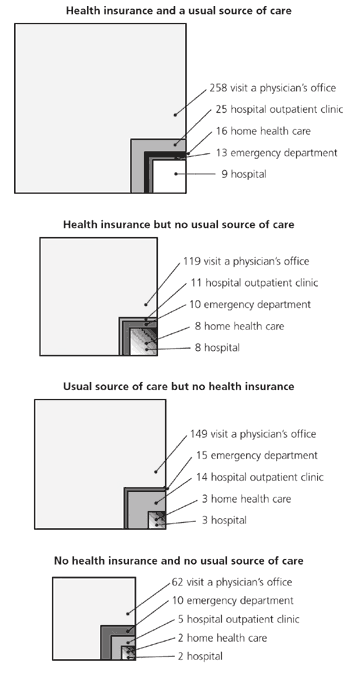
Am Fam Physician. 2004;70(6):1035
The effects of insurance and having a usual source of care are additive. Efforts to improve health care access for all should provide a medical home and health insurance.
Efforts to increase access to health care typically focus on providing health insurance or on securing a place that will care for the uninsured. Strong evidence suggests that having a usual source of care produces better health outcomes, reduced disparities, and reduced costs.1,2 Growing evidence suggests that the combination of health insurance and having a usual source of care has additive effects for quality,3 and that insurance changes that disrupt continuity relationships can lead to higher costs and poorer quality for up to a year.4 The 1996 Medical Expenditure Panel Survey shows that these two options are independently associated with differences in how patients receive care in physicians’ offices, hospital outpatient departments, hospitals, and their homes (see accompanying figure). The notable exception is the emergency department, the only setting in which care is universally accessible by law. However, it is the combination or lack of both that reveal the greatest difference in how patients receive care in an average month.
For adults and children of all socioeconomic backgrounds, access to a usual source of care and insurance have an additive effect on the care they receive and their health outcomes. As the public prepares for the next round of providing health care coverage for all persons, it is important to recognize that everyone needs insurance and a medical home.
